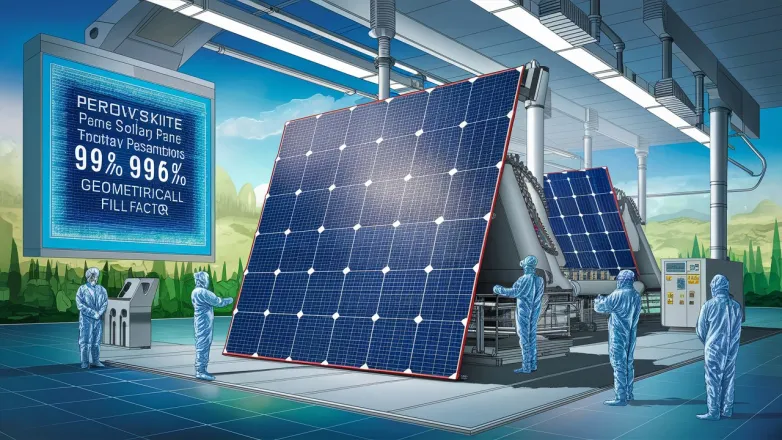Record 99.6% Geometrical Fill Factor in Perovskite Solar Modules
- Revolutionary laser techniques achieve over 99.5% fill factor in perovskite solar modules, reducing yield losses and boosting efficiency to 30%.

Researchers at CHOSE and Solertix have achieved a geometrical fill factor of over 99.5% in perovskite solar minimodules by utilizing advanced laser structuring techniques. This has resulted in reduced yield losses in cell-to-module scaling, with ultranarrow interconnections of 19.5 μm being used to achieve a 30% efficiency in area-matched 4T tandem designs.
The team fabricated mini perovskite solar panels with a power conversion efficiency of 20.7% and optimized laser processes to minimize the area used for interconnects. They identified potential losses in upscaling from cells to modules, such as layer inhomogeneity loss and P2 ohmic loss, and developed a new layout to minimize these losses. The module built with this architecture and ultranarrow interconnections demonstrated an efficiency of 20.7% and a geometrical fill factor of 96%.
In the future, the team plans to implement an advanced alignment procedure to prevent warping of the module during processing. Their research represents a significant advancement in the development of high-efficiency perovskite solar modules.
How did researchers achieve over 99.5% geometrical fill factor in perovskite solar minimodules?
- Researchers achieved over 99.5% geometrical fill factor in perovskite solar minimodules by utilizing advanced laser structuring techniques
- Ultrawide interconnections of 19.5 μm were used to achieve a 30% efficiency in area-matched 4T tandem designs
- Mini perovskite solar panels were fabricated with a power conversion efficiency of 20.7%
- Laser processes were optimized to minimize the area used for interconnects
- Potential losses in upscaling from cells to modules, such as layer inhomogeneity loss and P2 ohmic loss, were identified and minimized
- A new layout was developed to minimize these losses, resulting in a module with an efficiency of 20.7% and a geometrical fill factor of 96%
- Future plans include implementing an advanced alignment procedure to prevent warping of the module during processing
- This research represents a significant advancement in the development of high-efficiency perovskite solar modules.
Also read

